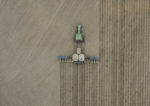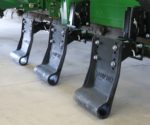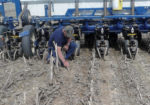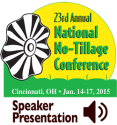Advertise Follow Us
Items Tagged with 'Corn residue'
ARTICLES
Chopped Corn Residue Helps Ensure Complete Nutrient Release
Eliminate Voles Without Sacrificing No-Till, Cover Crops
RTK Helps No-Tiller Tame Tough Corn Residue Challenges
‘Heads Up’ Solutions For Managing Corn Residue
PRODUCTS
How to Manage Corn Residue While Keeping it From Leaving Your Fields - Marion Calmer - NNTC 2016 Presentation - MP3 Download
Managing corn residue without it leaving your no-till fields is becoming a challenging task from the time of fall harvest to next year’s crop canopy. Because managing corn residue starts at harvest, in this presentation Marion Calmer discusses the mechanical impact that chopping corn heads, different styles of stalk rolls, stubble stompers and vertical tillage have on planting down pressure, clean seed trenches and how residue flows through planters. The western Illinois no-tiller also reviews the pros and cons of sizing corn residue, along with the economic impact it has on soil temperatures, soil moisture, earthworm populations, nutrient release, nitrogen tie-up and, ultimately, yield response.
ViewCombine Settings To Manage No-Till Residue, Harvest Top Yields - Marion Calmer - NNTC 2015 Presentation - MP3 Download
Marion Calmer takes corn harvest seriously. The no-tiller from Alpha, Ill., knows a properly adjusted combine will allow him to harvest every kernel possible, but he needs to process residue so he can no-till next year’s crop with limited interference from last year’s trash.
View










